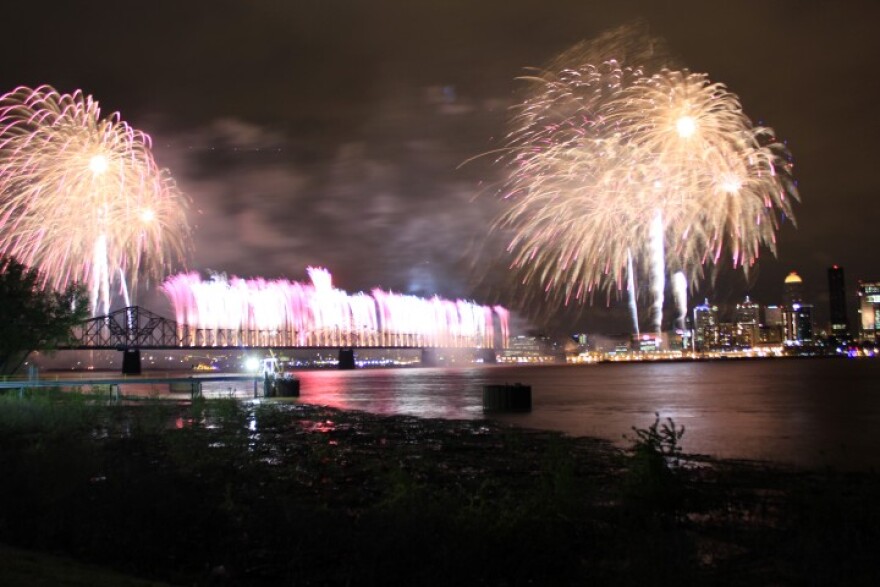After the last plane landed and the last firework exploded, how much air pollution did Thunder Over Louisville bring to Derby City?
Nearly three dozen aircraft flew above the city during Thunder’s air show. The performance included a day of stunts, death-defying maneuvers and smoke trails.
Saturday night culminated in a fireworks show. In the afterglow of the finale, you can’t help but wonder, what happens to all that smoke?
“The prevailing winds seemed to push it out pretty quickly,” said Tom Nord, a spokesman for the city’s Air Pollution Control District, which monitors air quality and watches for spikes in pollution.
Most of the time, it’s the soot from fireworks that adds particulate matter in the air and causes pollution. But this year, APCD didn’t notice any spikes.
“You know we have seen, I think, in the past what we could call a spike, higher [particulate matter] than normal, but generally we don’t see an official exceedance, and this year we really didn’t see much at all,” Nord said.
Air pollution is often worse on the Fourth of July, when people set off fireworks all over town, he said.
“Thunder tends to be an isolated event. It’s a relatively short duration and it’s late at night,” Nord said.


